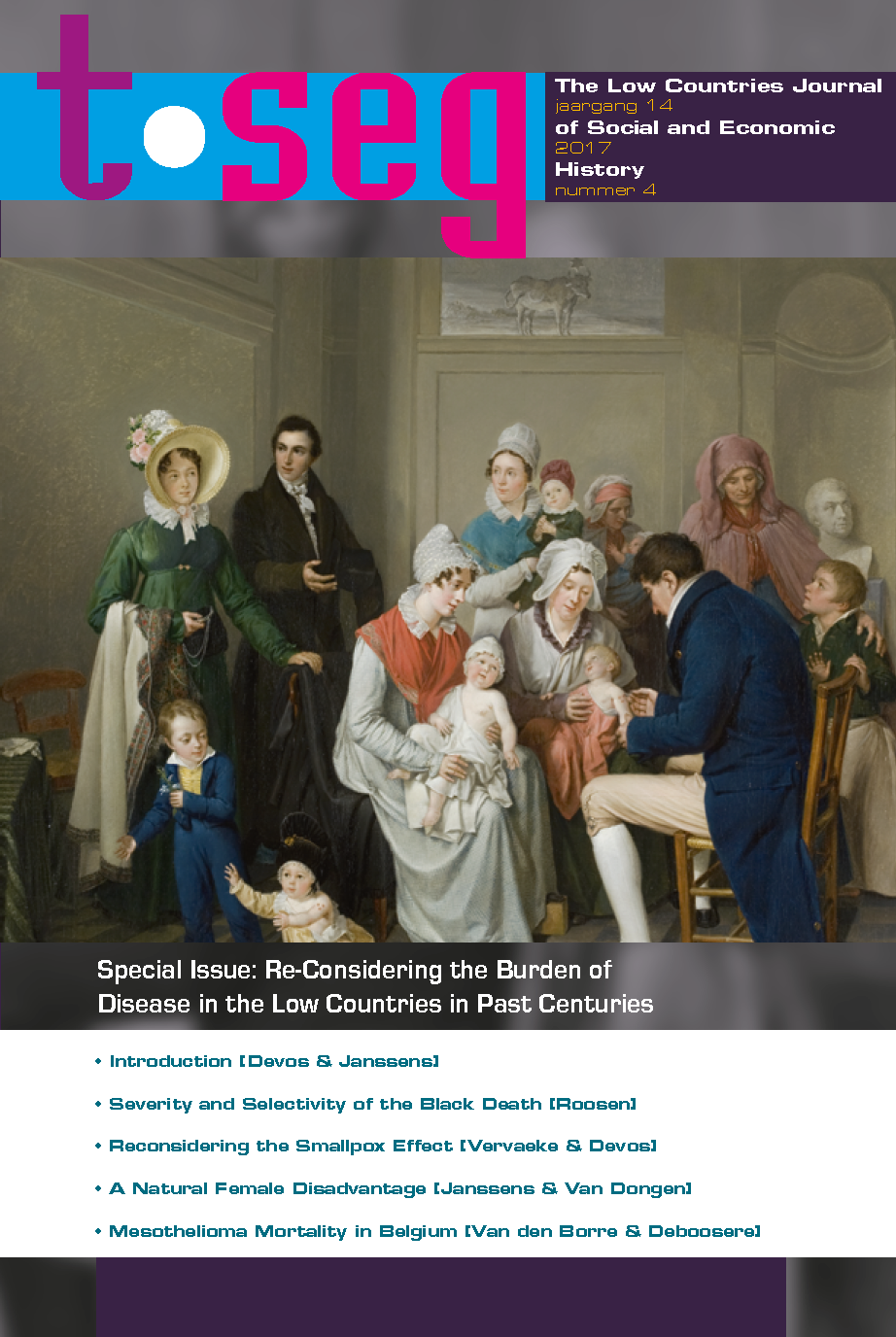Much Ado about Nothing? Reconsidering the Smallpox Effect. Height in the Nineteenth-Century Town of Thielt, Belgium
DOI:
https://doi.org/10.18352/tseg.987Keywords:
Smallpox, Height, Nineteenth Century, ThieltAbstract
Anthropometric evidence such as height has been considered a major indicator of the social and economic well-being of past societies. To understand differences in attained height, the role of several determinants has been widely discussed. Since the 1990s, the impact of disease has shown to be a promising topic. In particular, research on the effect of smallpox on the height of the population in nineteenth-century England has triggered heated debate. Voth and Leunig argue that smallpox stunted height, but their results have been called into serious question by scholars such as Oxley, Razzell, Heintel and Baten. In this article, we introduce new sources and evidence for Thielt, a small rural town in Belgium. By linking military registers with smallpox listings, our analysis allows for a nuanced study of the height of conscripts. In early nineteenth-century Thielt, height differences between smallpox survivors and those who did not fall prey to the disease appear to be largely the result of household circumstances. By taking into account individual and familial attributes, we show the importance of the father's death and father's occupation for the son's height. However, smallpox did not have a statistically significant effect on height.






